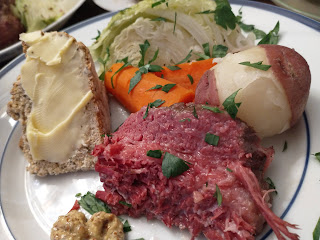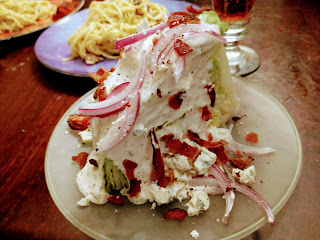
I have a passion for classic cinema. Not just as entertainment, but also for what the films say about our history. And of course when we look at cinema as history, we have to look at not just the stories they tell, but the way that they tell them. Whose stories are being told? From what perspective? What is the theme that the filmmakers intentionally addressed? Looking back on the films, what themes are now more readily apparent?
We can talk about how race is portrayed, or the role of women. We can even talk about how our relationship to our environment has been shown on film. But what I want to start talking about is how Hollywood has helped shape American gun culture. And not just in the obvious ways, in gangster films or Westerns. But in small, subtle ways. Guns have always been in our films. And I think their ubiquitousness has contributed to the idea that firearms are, by themselves, harmless - they are just a tool. And in many films they are used as a joke. I'm going to start writing about guns in classic films when they are used in odd ways. As a joke, or as a positive, harmless influence.
For example, I was watching the 1946 MGM musical "The Harvey Girls." It's about a western railroad town that is a little wild and uncivilized. It's main attraction is a saloon. But civilization is coming in the form of a Harvey House Restaurant. Restauranteer Fred Harvey opened a chain of cafes along the Atchinson, Topeka and Santa Fe railroad to cater to travelers. His restaurants all featured the same menu and were staffed by waitresses - called Harvey Girls - that were trained in manners. So these restaurants were very much seen as bringing civility to the frontier, an interesting historical avenue one could pursue.
The romantic plot of this film puts Judy Garland - pressed into service as a Harvey Girl when her pen-pal fiance turns out to be a fake (someone else wrote the letters) and a dud (itself another interesting historical plot - the reality of what the frontier offered, versus the reality). Judy is at first repulsed by the real writers of the letters that drew her there - the owner of the saloon, played swarthily by John Hodiak. Hodiak sees the Harvey Restaurant as a threat to his saloon, but he's eventually drawn to Judy. And the "good girl" Judy has a romantic opponent in Angela Lansbury as a street-smart saloon singer.
So there is much to talk about in this film regarding the settlement of the west, the role of women as servers - but also the opportunities that the Harvey restaurants gave many young women looking to work in a respectable business. But what struck me was the scene where Hodiak goes to the Harvey restaurant to ostensibly check out the competition. He orders the famous Harvey Steak, sending Judy to the kitchen to order, but the kitchen is missing all the meat. Judy guesses correctly that Hodiak probably stole the meat to embarrass her and the restaurant.
She borrows two pistols that are just hanging in a holster by the front door. Perhaps the restaurant asked people to check their pistols, or perhaps it was just customary. (We know that western towns actually had very strict gun laws - who could carry, where and when. The "wild west" was greatly exaggerated.) What follows is played for laughs.


At first bold with her two pistols, Judy eventually loses her grip and drops both guns; when she picks them up she cant seem to get a proper grip. It's "funny."
When she enters the saloon to look for the stolen meat, she's at first ignored. Why would anyone be startled by someone open carrying?? Especially a woman? Only when another customer - the actor I can't seem to place - plays along with her is she noticed. And then he needs to encourage the rest of the customers to fear her guns. (He even says he fears a woman with a gun more than a Dead-Eye Dick - because women were less reliable with a gun and might hit anywhere!).
She even closes her eyes and shoots at the bartender, hitting a bottle and not him. This doesn't frighten the crowd, she's still not a threat. The helpful customer now seems charmed by her and helps her get to the kitchen to recover the meat, much more out of whimsy than fear.
And when she leaves the saloon, she waves her guns around to say she wasn't really a threat - but she accidentally shoots down a chandelier. Again, played for laughs.


It's the cavalier way Judy waltzes around with the pistols. No one is perturbed, even after she shoots at the bartender (hitting a bottle he's holding). They could disarm her, but the one friendly customer humors her, plays along, encourages her. She accidentally shoots into the ceiling, bringing down a chandelier that falls on no one. She gets the meat back for her restaurant, embarrassing the saloon owner who tried to embarrass her.
So no harm, no foul! Guns are fun. Empowering. Even for women. Accidents don't happen in this world. Guns are just another tool. This is the kind of subtext these scenes create, and the kind of scenes I hope to continue to explore. Even in a musical film, known for songs like "The Atchinson, Topeka and the Santa Fe," a romantic film, a comedy - guns are treated like toys instead of truly deadly weapons. Perhaps this is part of the reason we have a gun culture that refuses to see that what connects all gun violence is - the guns.
EDIT: I'm already having some discussions with friends about whether or not guns in popular culture are a "cause" of gun violence. I don't think so. I do think our popular culture makes excuses for guns, and makes guns acceptable. And in that way popular culture that treats gun violence in a lighthearted manner is partly complicit for actual gun violence.



















































































